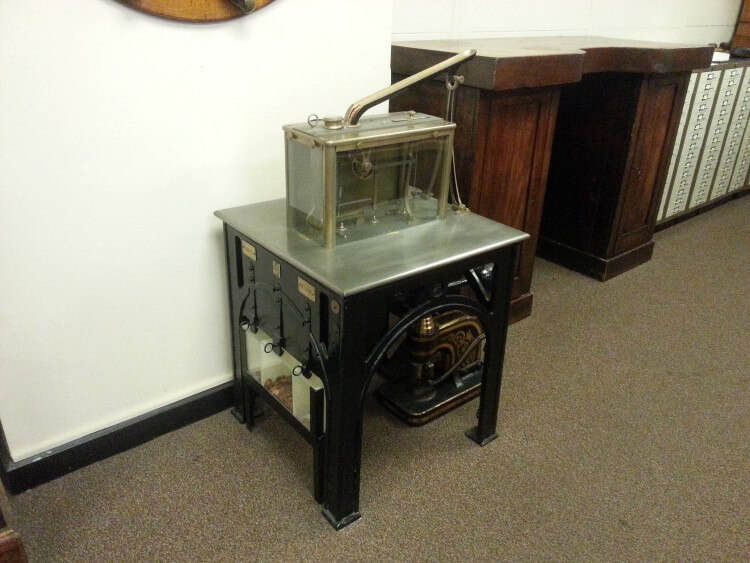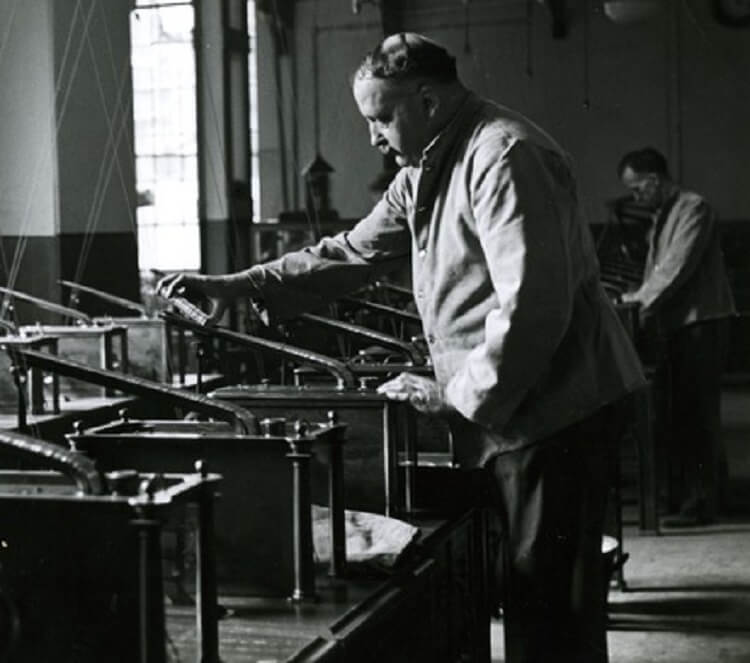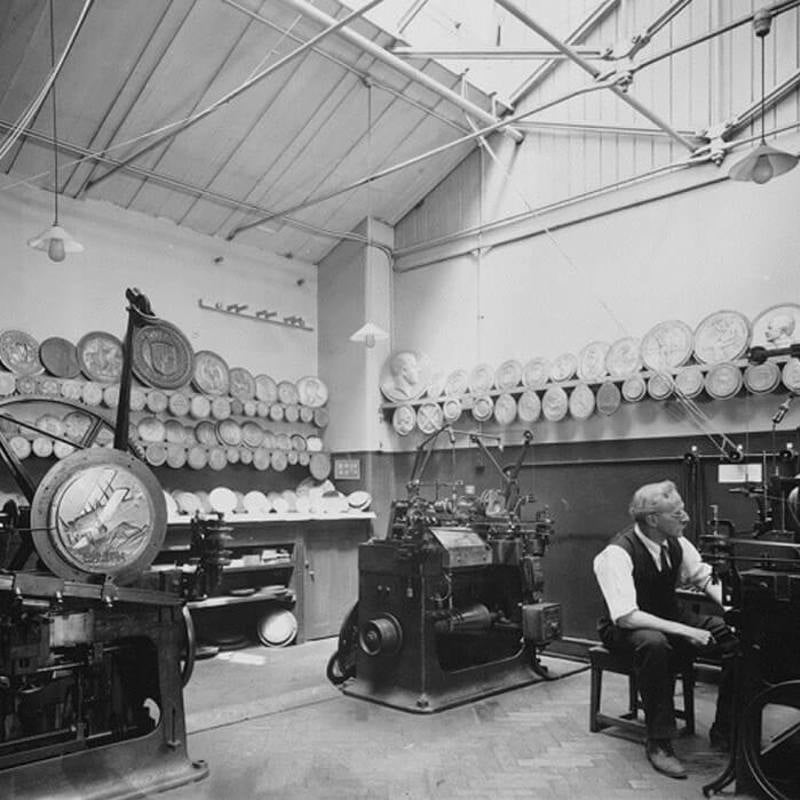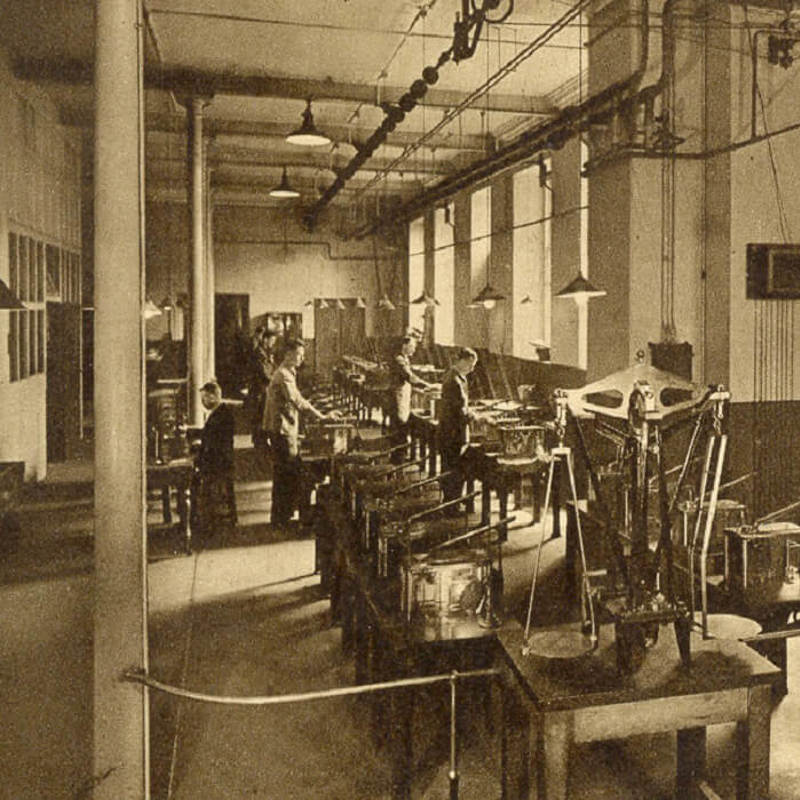Automatic Balance

Here at the Royal Mint Museum we are fortunate to have a large collection of objects that bring the history of coin production to life. However, one particular artefact has caught our eye over the course of the Inventory Project. It is an automatic balance of the type introduced in the 1850s to weigh gold and silver coins. It is in working order and has a smooth and elegant action even after all these years of hard work. The coins make a pleasing sound as they are sorted, although originally they would have been collected in bags under the machine and made very little noise. Automatic balances were employed to weigh bullet cartridges as part of the Royal Mint’s contribution to the war effort, and the machine’s mechanism is fascinating to watch. But the real significance of this machine is that it represents the mass produced accuracy of the coinage produced by the Royal Mint.
A coin's weight is controlled under the Coinage Acts and must therefore be strictly monitored. Before the 1850s the task of weighing coins, would have been carried out by Sizers. It was their job to weigh gold and silver coins individually. They would send light ones for re-melting and reduce with a rasp or file those which were found to be heavy. This was described at the time as an ‘inelegant and un-mechanical’ process. The installation of automatic balances over the following years streamlined and refined the task of weighing coins.
'(The) Last scene of all that ends this strange eventful history is the weighing department, where automatic balances of the most exquisitely delicate workmanship distinguish between light, medium, and heavy coins-the first and last being sent back to the melting pot, whilst the medium are passed for public circulation' (The Press, Volume XXXV, Issue 4848, 17 February 1881, Page 3).
This extract from an evocative article featured in the The Press in 1881 describes the automatic balances in the Royal Mint weighing room at Tower Hill, shown in the above image. This room was often a subject of admiration from visitors due to the ‘elegant and clever’ technology it employed. It would also have impressed guests as being very quiet in contrast to other noisy and hot areas of production. The automatic balances here would weigh each individual coin and sort them into three categories: light, heavy and correct.


Shown here is an engraving of the inner mechanism of an automatic balance from 'The Royal Mint: Its Working, Conduct and Operations, fully and practically explained; with suggestions for its better scientific and official management'. Ansell, G.F. 1870 page 37
The balance in the Museum works using an electric motor to power its mechanism but originally these machines would have been driven by a shaft fixed to the ceiling of the weighing room. This shaft was in turn powered by a steam engine. Once the balance is in motion the movement of a slide pushes the bottom coin in the feeder stack forward and onto a scale pan on one side of a balance beam. Once this happens the coin takes up a position relative to the counterweight on the other side of the beam. If it is heavier than the counterweight it will be lower, and if it is light it will be higher, working like traditional kitchen scales. The position of the balance beam is then fixed by an automatic grip and when the next coin is pushed onto the scale pan the previous one is pushed into one of three slots, according to its weight. The balance would weigh and sort coins in this manner at a rate of no more than 20 or so per minute. The machines had to run at a steady pace as time was needed to allow them to weigh each coin accurately. At this speed each machine could weigh approximately 10,000 coins per day, nowhere near the amount required to keep up with production. At its peak therefore, the weighing room contained over 50 of these balances.
The machine was so simple to use that anyone, even young boys, could be employed to stack coins on the feeder protruding from its top. The most important point for the worker to remember was not to let the machines run dry as this would damage their delicate mechanism.
When they were in perfect working order the balances were extremely accurate, and needed to be, as they were used to weigh coins, such as sovereigns, which relied on their weight in gold to give them value. At this time The Royal Mint was manufacturing millions of gold and silver coins which were all passing through these machines. The coins had gone through the whole process of production and yet, due to the strict regulations against margins of error, as much as 40% of some denominations could be rejected in the weighing room on the basis of incorrect weight. The balance therefore clearly highlights and represents The Royal Mint’s concern for accuracy and precision. In fact these machines carried out their task so efficiently that they were in use right up until the 1980s.

You might also like

Janvier Reducing Machine
In the Museum we have several reducing machines which were once integral to the process of minting.

Automatic Balance
The automatic balance clearly highlights and represents The Royal Mint’s concern for accuracy and precision.

Coins of Iceland
The origins of Iceland’s relationship with the Royal Mint may be found in the Second World War.

